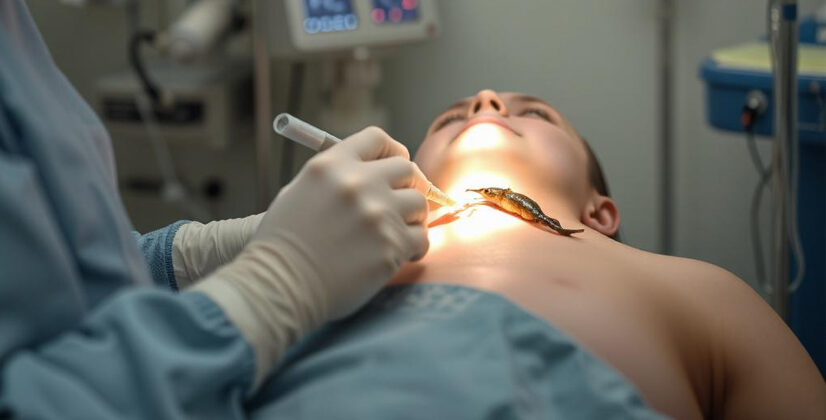Leech Therapy for Improved Healing After Gynecological Procedures
Leech Therapy for Gynecological Recovery
Featured Snippet Summary: Leech therapy might help patients recover from gynecological operations by promoting blood circulation and relieving congestion; however, scientific support remains scarce and there is a possible risk of infection.
Introduction: Leech Therapy for Gynecological Recovery
Following gynecological surgeries such as hysterectomies or reconstructive operations patients experience multifaceted healing processes. Hirudotherapy represents an ancient healing technique becoming increasingly popular because of its ability to boost recovery through blood circulation enhancement and tissue congestion reduction. The guide examines the potential of leech therapy to improve recovery after gynecological procedures by evaluating its advantages and risks while discussing how it fits with standard medical treatment to provide patients with useful insights about alternative recovery methods.
Related Keywords: hirudotherapy, wound healing, venous congestion, gynecological recovery.
What Is Leech Therapy?
Medicinal leeches (Hirudo medicinalis) extract 5-15 ml of blood during leech therapy while secreting saliva that contains:
- Hirudin: Anticoagulant to prevent clotting.
- Vasodilators: Enhance blood flow.
- Anti-inflammatory agents: Reduce swelling.
The FDA has approved leech therapy because of its historical surgical use which makes it widely applied in plastic and reconstructive surgery to reduce venous congestion and aid healing processes. While its application in gynecology lacks broad validation it shows potential benefits for particular clinical situations.
How Leech Therapy May Aid Gynecological Healing
Leech therapy helps patients recover better from operations such as pelvic reconstructive surgery and hematoma evacuation.
Relieving Venous Congestion
Vaginal flap reconstruction procedures can result in venous congestion which manifests as blood pooling from damaged veins and poses a risk to tissue survival. The application of leech therapy helps eliminate excess blood while improving circulation which supports tissue preservation.
A research case demonstrated effective hematoma treatment through hormone pellet insertion combined with leech therapy which helped prevent infections and supported healing.
Enhancing Wound Healing
The anticoagulants and vasodilators present in leech saliva supply surgical areas with oxygen and nutrients which accelerates wound healing.
Ayurvedic medicine practices utilize leech therapy to promote healing in gynecological wounds but lacks robust scientific evidence.
Reducing Inflammation
Post-surgical swelling can delay recovery. The anti-inflammatory substances in leech therapy help to decrease swelling and pain while promoting healing following surgical procedures such as myomectomy.
Evidence and Limitations
- Support: Research demonstrates that leech therapy helps remove hematomas and improves flap survival during reconstructive operations with 65-80% successful salvage rates reported in plastic surgery cases. Researchers documented 87% flap integration success with leech therapy for hematoma treatment in a 2023 study. While research on gynecological applications of leech therapy remains sparse it demonstrates effectiveness in resolving hematomas.
- Limits: No large-scale trials exist for gynecological procedures. The majority of existing evidence comes from plastic surgery research and individual case reports. A 2024 review study found that hirudotherapy research contained biases because they used small study samples.
- Regulation: The FDA has given approval for leech use in treating venous congestion but not in gynecological treatments.
Risks and Safety
- Infection: Leeches carry Aeromonas bacteria, risking wound infections. Antibiotics (e.g., fluoroquinolones) are required during therapy.
- Bleeding: Patients who have clotting disorders or have undergone a hysterectomy face increased risk from prolonged bleeding incidents.
- Contraindications: The treatment should not be administered to patients with anemia or pregnant women and those who are younger than 18 years old.
Safety Tip: Always perform leech therapy in certified healthcare facilities where medical professionals provide supervision.
Integrating with Gynecological Care
Leech therapy should complement standard care:
- Conventional: Patients receive antibiotics for infection treatment combined with pain management strategies and follow-up imaging after surgical procedures.
- Lifestyle: To aid recovery patients need sufficient rest along with proper hydration and diligent wound care.
- Consultation: Work with both a gynecologist and a hirudotherapy specialist to determine if leech therapy is appropriate for patients who need treatment for hematomas or flap procedures.
Internal Link: Our Complete Guide to Gynecological Health Issues offers recovery tips for patients to explore.
Patient Experiences
- The hematoma that developed after a hormone implant in a postmenopausal patient resolved with leech therapy which eliminated the need for additional surgery.
- Ayurvedic clinics provide anecdotal evidence of accelerated wound healing after gynecological procedures without clinical validation.
FAQ: Leech Therapy for Gynecological Healing
- Is leech therapy effective in promoting healing outcomes after gynecological surgery?Leech therapy could reduce congestion and improve wound healing according to preliminary evidence which remains insufficient.
- Is leech therapy safe post-hysterectomy?The bleeding risks render leech therapy unsafe unless supervised by medical professionals and demand consultation with a specialist.
- How does leech therapy promote recovery?This treatment improves circulation and decreases swelling at the site where surgery was performed.
- What research exists on the application of leech therapy for recovering from gynecological treatments?The current research on leech therapy for gynecological recovery shows potential but lacks extensive clinical testing.
Conclusion: Leech Therapy for Gynecological Recovery?
Leech therapy can improve surgical recovery in gynecological procedures through venous congestion relief and increased blood flow demonstrated during hematoma resolution and reconstructive surgery. The therapy’s use remains restricted to complementary applications monitored by professionals because current research lacks sufficient evidence and infection risks exist. Begin with standard care methods and then seek specialist advice to decide if leech therapy is appropriate for your healing process after gynecological procedures.
Call to Action:
Consult your gynecologist about leech therapy or visit our Health Blog for suggestions on recovery. Share your story in the comments!



